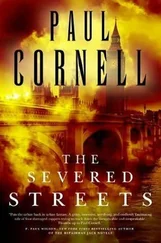All would have gone according to plan had Bernadette Barnes been able to keep her silence. Instead, she admitted to a co-worker at the city social services building that she had arranged her husband’s death, telling the woman, “I told you I was serious.” Alarmed, the co-worker called the police department, and after several months of investigation by the detectives on Stanton’s shift, Bernadette Barnes, Rodney Vice and Edwin Gordon were all in the Baltimore City Jail, tied together in a single prosecution report. Only then did Rodney Vice and his lawyer begin shopping some cooperation around, searching for a ten-years-or-less deal.
At a July 11 proffer session with lawyers and detectives at the Mitchell courthouse, Vice was asked how he had known that Edwin Gordon was a man capable of carrying out a contract murder. Nonplussed, Vice assured the detectives and prosecutors that Gordon had been in that line of work for some time. In fact, he had been killing people for an East Baltimore woman by the name of Geraldine for several years now.
How many people?
Three or four that Vice knew about. Not to mention that one girl-a niece of Geraldine’s-who wouldn’t die no matter how many times Gordon tried to kill her.
How many times did he try?
Three, said Vice. After the most recent occasion, when he had shot the girl in the head three times to little effect, Gordon was particularly disheartened, telling Vice, “It don’t matter what I do, the bitch won’t die.”
Checking back with Dollie Brown that same day, Waltemeyer and Crutchfield confirmed that Geraldine Parrish was indeed her aunt and that the young woman had indeed been assaulted a third time. She had been walking with Aunt Geraldine back in May, when the older woman told her to wait on a Hollins Street stoop while she went to get something. Seconds later, a man ran up and shot her repeatedly in the head. Again, she was treated and released from University Hospital; incredibly, she mentioned nothing to the investigating officers about the previous attempts on her life. McAllister handled the Hollins Street shooting, and knowing little of Waltemeyer’s extortion case two months earlier, he wrote nothing more than a brief 24-hour report.
As Vice spoke, a new tale was being added to the lore and legend of the BPD homicide unit, that of the Unsinkable Dollie Brown, the hapless, helpless niece of Miss Geraldine Parrish, alias the Black Widow.
Rodney Vice had a lot more to say about Miss Geraldine, too. After all, Vice told the gathering, it didn’t exactly stop with Dollie Brown and the $12,000 in insurance policies that Aunt Geraldine had obtained in her niece’s name. There were other policies, other murders. There was that man back in 1985, Geraldine’s brother-in-law, who had been shot on Gold Street. Edwin Gordon had taken that contract as well. And then there was the old boarder who lived at Geraldine’s house on Kennedy Street, the elderly woman whom Gordon had to shoot twice before he finally killed her off. It was Miss Geraldine herself who sent the old woman out to a Chinese carryout on North Avenue, then signaled Gordon, who walked calmly up to the target and fired one shot to the back at point-blank range, then issued a coup de grâce to the head after the victim fell to the sidewalk.
Veteran detectives left the courthouse with their heads spinning. Three murders, three attempted murders-and that was just what Vice happened to know about. On their return to the homicide office, open murder files dating back as many as three years were suddenly being yanked from the oblivion of the filing cabinets.
Incredibly, everything in those files conformed exactly to Rodney Vice’s account. The November 1985 murder of Frank Lee Ross, the common-law husband of Geraldine’s sister, had been handled by Gary Dunnigan, who at that time could find no motive for the slaying. Likewise, Marvin Sydnor had worked the fatal shooting of Helen Wright, sixty-five, who had been boarding with Geraldine on Kennedy Street; lacking any solid information about the murder, he had presumed that the old lady had been killed in a robbery attempt gone awry. Not that Sydnor hadn’t found a few loose ends in a routine interview with Geraldine Parrish; he even tried to polygraph the landlady, but he gave up when she produced a cardiologist’s note saying that her health could not stand the stress of a lie detector test. True to Vice’s account, the old woman had been shot in the head several weeks before being murdered but had survived the first assault-a redundancy that had also been written off as inner-city coincidence.
The sheer amount of new information made clear the need for a special detail, and Waltemeyer-because he had handled the original March extortion complaint as well as the initial shooting of Dollie Brown-soon found himself reassigned to Gary Childs’s squad on Stanton’s shift. He was joined by Mike Crutchfield, the primary detective on the Bernadette Barnes case, and later by Corey Belt, the bulldog from the Western District who had done so well on the Cassidy investigation. At Stanton’s request, Belt had been returned to homicide from the Western ops unit specifically for the investigation of Geraldine Parrish.
They began with detailed interviews of Dollie Brown and other relatives of Miss Geraldine’s, and what they heard became more incredible with each telling. Everyone in the family seemed to know what Geraldine had been doing, yet everyone seemed to have regarded her campaign to trade human lives for insurance benefits as an inevitable, routine bit of family business. No one ever bothered to call the police-Dollie, for one, had said nothing about her aunt during the extortion probe-but worse than that, many family members had signed insurance policies for which Geraldine was the beneficiary. Nieces, nephews, sisters, brothers-in-law, tenants, friends and neighbors-the detectives began learning of hundreds of thousands of dollars in double-indemnity policies. Yet when people were being shot, no one who knew anything about it had bothered to voice so much as mild apprehension.
They feared her. At least they said they feared her-and not just because they knew of the sociopaths that Geraldine Parrish employed for her insurance killings. They feared her because they believed that she had a special power, that she knew voodoo and hexes and all kinds of Carolina backwoods garbage. She could bend a man to her will, make one marry her or make one kill for her. She told them that stuff and, after a time, when people began dying, they actually took to believing it.
But Aunt Geraldine’s power wasn’t at all obvious to anyone outside the family circle. She was a semiliterate lay preacher with a gray Cadillac and a white stone rowhouse with fake paneling and dropped tile ceilings. She was heavyset, and ugly, too-a thoroughly unattractive woman whose penchant for wigs and fire engine red lipstick suggested a $20 Pennsylvania Avenue prostitute. Geraldine was a hard fifty-five years old when the city homicide unit finally kicked in her front door and that of her mother’s house on Division Street.
The search of both addresses takes hours, as Childs, Keller and Waltemeyer find policy binders and other papers strewn throughout the two rowhouses. Long before the search at Kennedy Avenue is complete, Geraldine departs in the back of an Eastern District wagon, arriving at the homicide office well before the investigators. She sits stoically in the large interrogation room as Childs and Waltemeyer arrive and spend another hour or so in the coffee room scanning the insurance policies, photo albums and documents seized in the two houses.
The two detectives immediately notice a proliferation of marriage licenses. As far as they can tell, the woman is married to five men simultaneously, two of whom were living with her on Kennedy Avenue and were taken downtown as witnesses following the raid. The two men sit together like bookends on the fishbowl sofa, each believing the other to be nothing more than a tenant at the East Baltimore home. Each is confident of his own place in the household. Each has signed a life insurance policy naming Geraldine Parrish or her mother as the beneficiary.
Читать дальше












